Top Ten Longest Rivers In The World
1 – Nile (4,180 miles)
The longest river in the world, the river Nile, starts at the Tributaries of Lake Victoria, Africa and runs into the Mediterranean Sea.
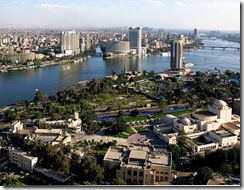
2 – Amazon (3,912 miles)
The Amazon river starts in Glacier-fed lakes, Peru and ends in the Atlantic Ocean
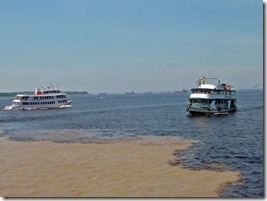
3. Yangtze River
The Chang Jiang or Yangtze river begins at the Tibetan plateau, China and leads to the China Sea.
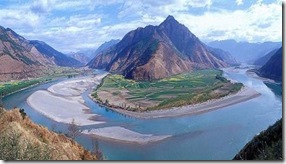
4 .Huang He River
The Huang He or Yellow river, on of the longest rivers in the world, begins its journey in the Eastern part of the Kunlan Mountains, West China and ends in the Gulf of Chihli.
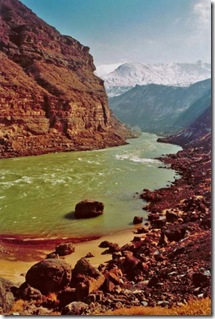
5. Ob-Irtysh River
The river Ob starts at the Altai Mountains, Russia and ends at the Gulf of Ob
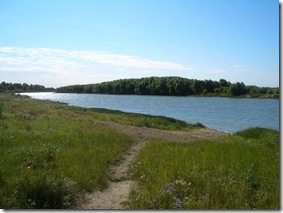
6 .Amur River
The Amur River or Heilong river is the worlds sixth longest river in the world,the border betwen the Russian Far East and Northeastern China.
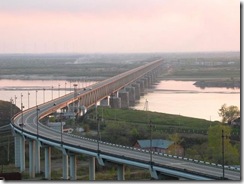
7. Lena River
The Lena river is the easternmost of the three great Siberian rivers that flow into the Arctic ocean.
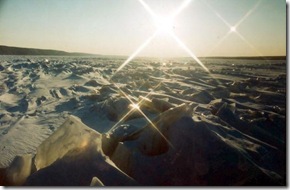
8. Congo River
The Congo River it the largest river in Western Central Africa and second longest river in Africa.
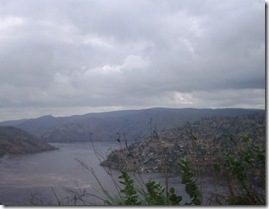
9. Mackenzie River
The Mackenzie River originates in Great Slave Lake, in the Northwest Territories, and flows north into the Arctic Ocean.it is longest river in Canada and 9th longest river in the world.
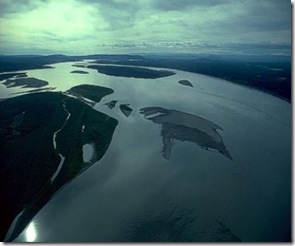
10 .Mekong River
The Mekong River is one of the world’s major rivers.it is the 10th longest river in the world and seventh longest river in Asia.
1 – Nile (4,180 miles)
The longest river in the world, the river Nile, starts at the Tributaries of Lake Victoria, Africa and runs into the Mediterranean Sea.

2 – Amazon (3,912 miles)
The Amazon river starts in Glacier-fed lakes, Peru and ends in the Atlantic Ocean

3. Yangtze River
The Chang Jiang or Yangtze river begins at the Tibetan plateau, China and leads to the China Sea.

4 .Huang He River
The Huang He or Yellow river, on of the longest rivers in the world, begins its journey in the Eastern part of the Kunlan Mountains, West China and ends in the Gulf of Chihli.

5. Ob-Irtysh River
The river Ob starts at the Altai Mountains, Russia and ends at the Gulf of Ob

6 .Amur River
The Amur River or Heilong river is the worlds sixth longest river in the world,the border betwen the Russian Far East and Northeastern China.

7. Lena River
The Lena river is the easternmost of the three great Siberian rivers that flow into the Arctic ocean.

8. Congo River
The Congo River it the largest river in Western Central Africa and second longest river in Africa.

9. Mackenzie River
The Mackenzie River originates in Great Slave Lake, in the Northwest Territories, and flows north into the Arctic Ocean.it is longest river in Canada and 9th longest river in the world.

10 .Mekong River
The Mekong River is one of the world’s major rivers.it is the 10th longest river in the world and seventh longest river in Asia.
| Approx. length | ||||
|---|---|---|---|---|
| River | Source | Outflow | mi. | km |
| Nile | Tributaries of Lake Victoria, Africa | Mediterranean Sea | 4,180 | 6,690 |
| Amazon | Glacier-fed lakes, Peru | Atlantic Ocean | 3,912 | 6,296 |
| Mississippi-Missouri- Red Rock | Source of Red Rock, Montana | Gulf of Mexico | 3,710 | 5,970 |
| Chang Jiang (Yangtze) | Tibetan plateau, China | China Sea | 3,602 | 5,797 |
| Ob | Altai Mts., Russia | Gulf of Ob | 3,459 | 5,567 |
| Huang He (Yellow) | Eastern part of Kunlan Mts., West China | Gulf of Chihli | 2,900 | 4,667 |
| Yenisei | Tannu-Ola Mts., western Tuva, Russia | Arctic Ocean | 2,800 | 4,506 |
| Paraná | Confluence of Paranaiba and Grande rivers | Río de la Plata | 2,795 | 4,498 |
| Irtish | Altai Mts., Russia | Ob River | 2,758 | 4,438 |
| Zaire (Congo) | Confluence of Lualab and Luapula rivers, Congo | Atlantic Ocean | 2,716 | 4,371 |
| Heilong (Amur) | Confluence of Shilka (Russia) and Argun (Manchuria) rivers | Tatar Strait | 2,704 | 4,352 |
| Lena | Baikal Mts., Russia | Arctic Ocean | 2,652 | 4,268 |
| Mackenzie | Head of Finlay River, British Columbia, Canada | Beaufort Sea (Arctic Ocean) | 2,635 | 4,241 |
| Niger | Guinea | Gulf of Guinea | 2,600 | 4,184 |
| Mekong | Tibetan highlands | South China Sea | 2,500 | 4,023 |
| Mississippi | Lake Itasca, Minnesota | Gulf of Mexico | 2,348 | 3,779 |
| Missouri | Confluence of Jefferson, Gallatin, and Madison rivers, Montana | Mississippi River | 2,315 | 3,726 |
| Volga | Valdai plateau, Russia | Caspian Sea | 2,291 | 3,687 |
| Madeira | Confluence of Beni and Maumoré rivers, Bolivia–Brazil boundary | Amazon River | 2,012 | 3,238 |
| Purus | Peruvian Andes | Amazon River | 1,993 | 3,207 |
| São Francisco | Southwest Minas Gerais, Brazil | Atlantic Ocean | 1,987 | 3,198 |
| Yukon | Junction of Lewes and Pelly rivers, Yukon Territory, Canada | Bering Sea | 1,979 | 3,185 |
| St. Lawrence | Lake Ontario | Gulf of St. Lawrence | 1,900 | 3,058 |
| Rio Grande | San Juan Mts., Colorado | Gulf of Mexico | 1,885 | 3,034 |
| Brahmaputra | Himalayas | Ganges River | 1,800 | 2,897 |
| Indus | Himalayas | Arabian Sea | 1,800 | 2,897 |
| Danube | Black Forest, Germany | Black Sea | 1,766 | 2,842 |
| Euphrates | Confluence of Murat Nehri and Kara Su rivers, Turkey | Shatt-al-Arab | 1,739 | 2,799 |
| Darling | Central part of Eastern Highlands, Australia | Murray River | 1,702 | 2,739 |
| Zambezi | 11°21'S, 24°22'E, Zambia | Mozambique Channel | 1,700 | 2,736 |
| Tocantins | Goiás, Brazil | Pará River | 1,677 | 2,699 |
| Murray | Australian Alps, New South Wales | Indian Ocean | 1,609 | 2,589 |
| Nelson | Head of Bow River, western Alberta, Canada | Hudson Bay | 1,600 | 2,575 |
| Paraguay | Mato Grosso, Brazil | Paraná River | 1,584 | 2,549 |
| Ural | Southern Ural Mts., Russia | Caspian Sea | 1,574 | 2,533 |
| Ganges | Himalayas | Bay of Bengal | 1,557 | 2,506 |
| Amu Darya (Oxus) | Nicholas Range, Pamir Mts., Turkmenistan | Aral Sea | 1,500 | 2,414 |
| Japurá | Andes, Colombia | Amazon River | 1,500 | 2,414 |
| Salween | Tibet, south of Kunlun Mts. | Gulf of Martaban | 1,500 | 2,414 |
| Arkansas | Central Colorado | Mississippi River | 1,459 | 2,348 |
| Colorado | Grand County, Colorado | Gulf of California | 1,450 | 2,333 |
| Dnieper | Valdai Hills, Russia | Black Sea | 1,419 | 2,284 |
| Ohio-Allegheny | Potter County, Pennsylvania | Mississippi River | 1,306 | 2,102 |
| Irrawaddy | Confluence of Nmai and Mali rivers, northeast Burma | Bay of Bengal | 1,300 | 2,092 |
| Orange | Lesotho | Atlantic Ocean | 1,300 | 2,092 |
| Orinoco | Serra Parima Mts., Venezuela | Atlantic Ocean | 1,281 | 2,062 |
| Pilcomayo | Andes Mts., Bolivia | Paraguay River | 1,242 | 1,999 |
| Xi Jiang (Si Kiang) | Eastern Yunnan Province, China | China Sea | 1,236 | 1,989 |
| Columbia | Columbia Lake, British Columbia, Canada | Pacific Ocean | 1,232 | 1,983 |
| Don | Tula, Russia | Sea of Azov | 1,223 | 1,968 |
| Sungari | China–North Korea boundary | Amur River | 1,215 | 1,955 |
| Saskatchewan | Canadian Rocky Mts. | Lake Winnipeg | 1,205 | 1,939 |
| Peace | Stikine Mts., British Columbia, Canada | Great Slave River | 1,195 | 1,923 |
| Tigris | Taurus Mts., Turkey | Shatt-al-Arab | 1,180 | 1,899 |
